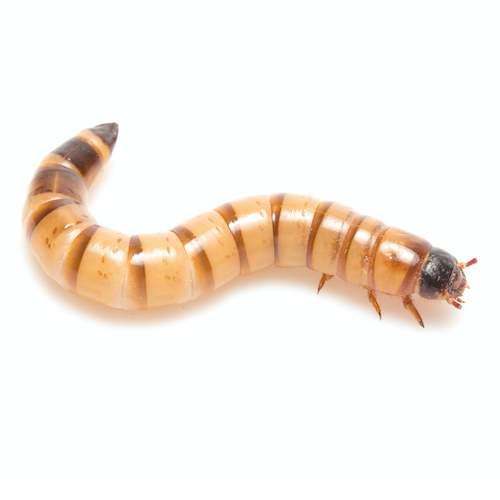Superworm Care Sheet - Zophobas morio
Much like Mealworms, Superworms are darkling beetle larvae and are a great treat to add to a varied diet
Introduction
But it’s important not to confusing Superworms with Giant Mealworms, which are Mealworms sprayed with a growth hormone.
Superworms are a great source of calcium, fat and fibre. Compared to Mealworms, Superworms yield much higher amounts of all three, mostly due to the chitin that makes up their exoskeleton. The chitin makes the biggest difference when it comes to nutrition. This is an analysis of Superworms sourced from Fluker’s Farms:
- Moisture 61.92%
- Fat 14.19%
- Protein 19.06%
- Fibre 2.6%

Feeding to your pet
It is vital not to over feed superworms, as it can easily lead to a fatty liver. Because of this, it’s best to avoid feeding more then 10 per week to a full- grown Bearded Dragon, with the exception of a female after laying.
Superworms are much more active than mealworms, which makes them much more attractive to most reptiles, especially if your dragon enjoys hunting or is a picky eater.
Housing
Unlike Mealworms, Superworms do not last in a refrigerated environment. Because of this they must be stored at room temperature. A good way to distinguish between giant mealworms and super worms is to simply place a few in the fridge overnight, super worms will die, giant mealworms will survive. This test may need to be done as some companies will mislabel Giant Mealworms as Superworms.
Superworms have been known to eat through almost anything, so they are best kept in a sturdy plastic container. Drill holes in the lid, or cut out large sections and replace with fine mesh, to allow for adequate airflow and to avoid too much humidity. Wheat Bran, Oat Bran and plain oats are all great substrates to keep superworms in. It’s best to give them a 5cm ish deep layer
so they have plenty of food and room to burrow.
Feeding
Food wise, carrot and potato are great options because they don’t tend to attract ants or fruit flies, although Superworms will eat almost any vegetable scrap. Once the food source dries out, replace it with a fresh one to ensure your feeders are getting plenty of moisture from their food. Remember, if you keep your feeders well fed, the animal you’re feeding them to will get the most out of its meal.
Breeding
There are so many different methods out there, but here is my favourite beginner method.
Draws are perfect because they’re easy to pull out instead of having to mess around with tubs. You can buy a set of 4 plastic draws from office works for approximately $24. I prefer to use Bran as a substrate because it’s easier to sift the worms out of. If you have them on hand, place two or more clean egg cartons in the Superworm and beetle draws to provide them with more surface area. You’ll want your chosen substrate to be a good few cm deep so the worms can feel safe.
To pupate your worms, use a plastic tackle box or some other sort of divider to individually separate each worm. Space Coast Mealworms’ Superworm Pupators work amazingly. Only pupate the biggest worms to give them the best chance of surviving pupation. It can take 1-2 weeks for your worms to pupate and another 2 weeks for them to hatch into beetles. If after two weeks of isolation there are still worms which haven’t pupated, they are obviously not ready. Simply place them back into the group draw/container and replace with a different worm.
Once they hatch, place the beetles in a fresh draw with a substrate layer 1- 2cm thick. Ideally feed them carrots and/or potatoes (although find what food source best suits you). After 2 weeks, move the beetles to a new draw and leave the old one. Within a month or so you should see your baby superworms, care for them the same as the adults. I generally combine two egg trays to increase the substrate depth in the worm draws and save space. Just repeat this process every 2 weeks.
The darkling beetles can have a life span anywhere from 2 months to a year (depending on temperature and quality of care) so it’s best to always have new pupae on the go, to keep a constant supply of beetles.
**Tip: Once a month, feed your beetles a small bit of old bacon. They are omnivores and will greatly benefit from some meat in their diet**]
If you have any further questions relating to Superworms and their care, please don’t hesitate to us at sales@hatchedpetsupplies.com.au or via our Social Medias.
